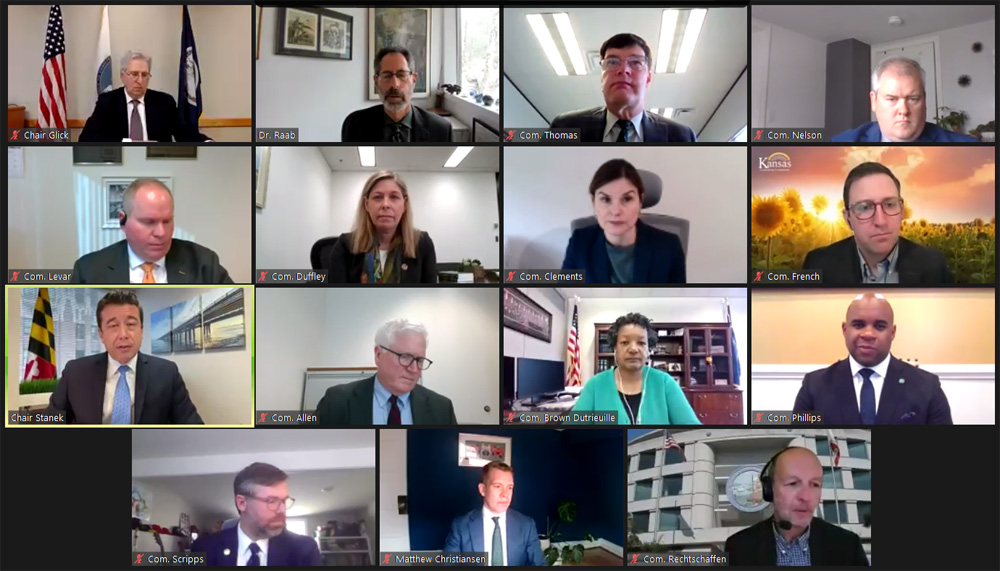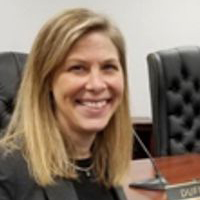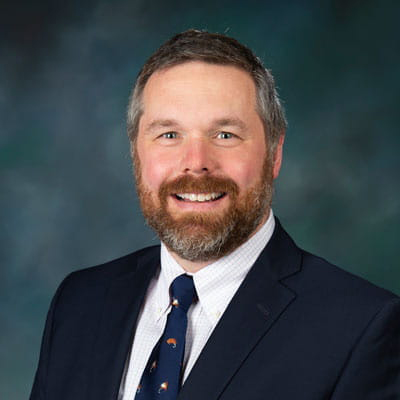FERC and state regulators embraced cluster studies but gave mixed reviews to “fast track” processing as potential solutions to clogged interconnection queues Friday during the third meeting of the Joint Federal-State Task Force on Electric Transmission.
The task force, which includes FERC members and 10 state regulators, was created by FERC Chairman Richard Glick in June to unleash transmission expansion to improve resilience and connect new renewable generation (AD21-15).
Unlike the group’s first two meetings in Louisville, Ky., in November and D.C. in February, the third daylong session was virtual. (See FERC-State Tx Task Force Begins Work and FERC-State Tx Task Force Debates Allocation, Benefits.)
 The third meeting of the Joint Federal-State Task Force on Electric Transmission was held virtually. | FERC
The third meeting of the Joint Federal-State Task Force on Electric Transmission was held virtually. | FERC
The first half of the session focused on unclogging the queues, while the second half focused on cost allocation. (See related story, Task Force Seeks ‘Right Balance’ in Spreading Tx Upgrade Costs.)
 FERC Commissioner Willie Phillips | © RTO Insider LLC
FERC Commissioner Willie Phillips | © RTO Insider LLC
FERC Commissioner Willie Philips laid out the first problem at the beginning of the five-hour meeting, noting that interconnection costs, which used to be less than 10% of generators’ total project costs, can now exceed 50%.
“The serial, first-come-first-serve study process incentivizes developers to enter into the queue before they are ready. They do this so that they can snag a spot in line. Interconnection customers also submit multiple interconnection requests at different locations even though they know that not all of them will reach commercial operation,” he said. “They do this to find where they can get the least amount of network cost upgrades. Then there are often late-stage withdrawals or material modifications to projects, which means that transmission providers must conduct restudies. Ultimately this is harming the ability of transmission providers to timely process the queue.”
Jonathan Raab — president of consultancy Raab Associates and facilitator of the meeting — cited data from Lawrence Berkeley National Laboratory showing that the typical duration from connection request to commercial operation has nearly doubled, from 2.1 years in 2000-2010 to 3.7 years for 2011-2021. Only 23% of projects that requested interconnection in 2000-2016 have reached commercial operations, with only 20% of wind projects and 16% of solar completed.
In contrast with the first two meetings, “we’re not just asking questions this time,” Raab said. Instead the meeting sought feedback on five potential improvements:
- tighter applicant requirements to enter or remain in the queue;
- clustering of applications and areas for studies;
- faster tracks for different generator categories (e.g. state solicitations or smaller resources with limited impacts);
- tighter study deadlines for RTOs and other transmission providers; and
- minimizing restudies.
FERC Warned Against Undermining State Efforts
Several state regulators urged FERC not to issue a sweeping rule that could undermine progress some jurisdictions have made.
 Chair Thad LeVar, Utah Public Service Commission | Utah Public Service Commission
Chair Thad LeVar, Utah Public Service Commission | Utah Public Service Commission
Utah Public Service Commission Chair Thad LeVar said that while the interconnection queue process is “easy … to criticize,” policymakers should recognize “the significant reform efforts that many transmission providers across the country have been engaging in in recent years.”
“The specific issues that we’ll be talking about over the next couple hours aren’t new concepts that nobody’s been trying,” he added.
“I’ve heard from the SEARUC [Southeastern Association of Regulatory Utility Commissioners] states as well as some RTOs like PJM,” North Carolina Utilities Commissioner Kimberly Duffley said. “And they request that FERC allow queue reforms to move forward regionally without the disruption of possibly inconsistent requirements.”
Duffley said North Carolina officials are optimistic about recent changes to the queue procedures of Duke Energy Carolinas and Duke Energy Progress.
 Commissioner Kimberly Duffley, North Carolina Utilities Commission | North Carolina Utilities Commission
Commissioner Kimberly Duffley, North Carolina Utilities Commission | North Carolina Utilities Commission
The state has been a leader in utility-scale solar, Duffley said, but beginning about 2014, the first-come-first-serve interconnection queues began experiencing backlogs and queue-squatting complaints.
The addition of new financial security requirements in 2015 provided some relief, she said, but proved insufficient. Additional changes were approved by FERC last August (ER21-1579), following endorsements by the NCUC and South Carolina Public Service Commission, replacing the serial study process with a first-ready-first-served, cluster-based study process.
Duffley said the impact of the new rules, which were based on those of Public Service Company of Colorado, won’t be known until the first quarter of 2023.
“I believe that the RTO and the system planners are best positioned to structure interconnection rules for their individual regions, and that prescriptive one-size-fits-all interconnection rules are not necessary,” said Gladys Brown Dutrieuille, chair of the Pennsylvania Public Utility Commission. “That being said, I think that FERC is in a position that they can encourage interconnection efficiencies throughout the country by promoting best-in-class processes, such as variations in ways to cluster projects.”
Support for Cluster Studies
There was wide support for cluster studies, which allow transmission providers to consider many projects in one study. Supporters say restudies are less frequent and disruptive because generators in a cluster can share the cost of network upgrades.
Phillips said cluster studies should be considered a best practice.
“Almost all RTOs and ISOs have used a cluster approach for years, and PJM is currently working on a cluster proposal right now,” he said. “Several transmission providers outside of the RTO regions have also started moving to a cluster approach in recent years.”
 Maryland Public Service Commission Chair Jason Stanek | © RTO Insider LLC
Maryland Public Service Commission Chair Jason Stanek | © RTO Insider LLC
PJM will file with FERC later this month a proposed interconnection queue process that moves away from the first-come-first-served model to a first-ready-first-served concept. “That will make the process somewhat quicker, maybe as quick as 450 days … and that would cut down from an average of somewhere in about 700 days,” said Jason Stanek, chair of the Maryland Public Service Commission. (See PJM Stakeholders Endorse New Interconnection Process.)
Vermont Public Utility Commissioner Riley Allen said clustering can help identify “backbone or … trunk facilities” that provide efficiencies in the system for ratepayers’ benefit.
LeVar said cluster studies also have been helpful in Western states’ review of utility integrated resource plans that result in solicitations for new resources. “There’s usefulness to best practices. But these best practices are going to operate differently in each RTO and particularly between the RTO and non-RTO areas,” he cautioned.
California Public Utilities Commissioner Clifford Rechtschaffen said CAISO’s use of cluster processes has been “very helpful” but “is not a panacea.”
“Last year in CAISO, in one cluster in two weeks, there was 100 GW of applications filed in a single window, which is 10 times the amount of authorized procurement,” he said. “So clustering absolutely helps … but it has to be accompanied by the other reforms that we’re talking about.”
Fast Track
There was less unanimity over fast-track proposals.
Stanek called clustering and fast-track processes “Siamese twins. They’re very different, but they have some similarities that lead to overall efficiencies.”
He suggested fast tracking generation seeking to locate at the sites of retiring plants such as the Oyster Creek nuclear plant in New Jersey and the Indian River coal facility in Delaware, saying it could reduce the need for expensive reliability-must-run agreements.
“Perhaps the standard interconnection process would not be as arduous if we’re using existing switchgear and existing substations behind the fence,” he said. “Taking advantage of the fact that these points have already been modeled, it shouldn’t take 1,000 days or four years for … some generator to step into the shoes of an existing generator.”
Arkansas Public Service Commission Chair Ted Thomas said he agreed “conceptually” with using milestones such as financing and site control to prioritize the queue. “But while we work on those solutions, I also think that we need to be conscious that we not make this a game that only large players can play.”
Glick said any fast track would have to be crafted carefully to ensure it does not violate the Federal Power Act’s prohibition on “undue discrimination.”
“If you start saying small resources have a separate category and make it some expedited approval, that actually might, I think … come across as discriminatory.”
Tighter Requirements
Task force members also expressed concerns over tightening queue eligibility requirements.
 Michigan Public Service Commission Chair Dan Scripps | Michigan Public Service Commission
Michigan Public Service Commission Chair Dan Scripps | Michigan Public Service Commission
Dan Scripps, chair of the Michigan Public Service Commission, said increasing applicant requirements “could ultimately delay projects that we’re going to need, even if we don’t know who the specific off-taker is today.”
“If I go back to the old … saying that ‘all regulation is incentive regulation,’ in some ways we’re getting the system that we’re encouraging here,” he said. “When you talk to developers, they say the length of the time to get through the queue processes encourages the speculative or placeholder nature of a lot of the projects.”
Transmission Providers’ Accountability
Commissioner Allison Clements said she had concluded that FERC’s attempt at “incremental reforms” in Order 845 in 2018 “hasn’t worked.” The order sought to increase the transparency and timeliness of the interconnection process. (See FERC Order Seeks to Reduce Time, Uncertainty on Interconnections.)
She solicited feedback on ways FERC can ensure transmission providers are meeting their obligations, noting that PJM reported to the commission that 99% of its facilities studies failed to meet tariff deadlines in 2021. She said it is unfair that queue participants are held to strict deadlines while transmission providers are only required to make “reasonable efforts” to meet deadlines.
“Interconnection customers facing steady delays have little recourse when a transmission provider misses a deadline, because the reasonable-effort standard is not a particularly high bar,” she said. “We need to make some sort of modification to the … reasonable-effort standard.”
Among the options are penalties, for which “we’d have to think about the specifics of force majeure exemptions; waivers; amount of the penalty,” she said. “What would we use the penalty for? When [would] the penalty start?”
She said transmission providers also could be required to devote more staff, software and other resources to interconnection, or subject to additional public reporting requirements — “a scorecard relative to performance.”
LeVar said regulators should consider “what barriers might exist to individual generators [and focus on transmission provider] outliers, the ones that aren’t trying to engage in reform and are making the good-faith efforts that many are.”
Affected-system Studies
Scripps urged FERC to set standards regarding cross-RTO affected-systems studies, which, he said, “have the ability to destroy project economics” and have become “a growing source of delay and cost uncertainty for interconnection customers.”
“We expect the affected-system study process to become increasingly critical as more renewable resources come online in renewable-rich areas and transmission capacity becomes ever more scarce,” he said.
In 2018, a FERC technical conference resulted in a September 2019 order requiring MISO, PJM and SPP to improve the transparency of their affected-system studies. (See Affected-system Rules Unclear, FERC Says.) But Scripps noted the commission declined to open a generic proceeding to address broader affected-system coordination issues.
“We saw in the filings from MISO, SPP and PJM that were done in 2019 and 2020 [that] the delays continue to persist and often due to the underlying issues that were brought to light in that technical conference. Namely each RTO’s process and study times are different and tailored to the region.
“It may be time to revisit the commission’s 2019 decision not to initiate a proceeding to better coordinate affected-system studies. Specifically, there may be an opportunity to create a general framework that would be consistent across RTO seams,” he said. “Fully addressing these cross-RTO issues are inherently beyond any one RTO’s or ISO’s ability to fully control.”
Arkansas’ Thomas said he agreed “word for word” with Scripps. “The most effective place that FERC can operate is in the area where you have two RTOs, and the real issue is getting them on the same page. I think that FERC should start gently and move towards less gentle as needed.”
Transmission Planning
Maryland’s Stanek said reform of the generator interconnection process is interlinked with that of transmission planning. “They’re both interdependent elements of developing needed transmission infrastructure and share many of the very same principles and challenges,” he said. “A very key difference here is that the generator interconnection needs are much more focused and much more immediate. This is an issue that we can tackle now and not have to wait 20 years to see if the fruits of our labor yield success. How well these new processes are implemented will determine that success.”
Andrew French, chair of the Kansas Corporation Commission, said the queue backlog is “a symptom of queue-based planning.”
“While we need to, in the interim, try to address the demand for those resources and addressing what’s in the queues now, we can’t lose sight of the fact that the ultimate long-term solution is better long-range planning,” French said.
Vermont’s Allen said, “There’s a growing body of evidence, especially from PJM and MISO, that we can actually interconnect much more capacity going forward if we do it in a very anticipatory long-term planning framework than on a serial or even a … cluster-by-cluster framework that is the prevailing paradigm.”
On April 21, FERC issued a Notice of Proposed Rulemaking that would require transmission providers to use scenarios and probabilistic techniques to identify potential infrastructure needs 20 years into the future based on decarbonization policies and industry trends. (See FERC Issues 1st Proposal out of Transmission Proceeding.)
Cure for What Ails Us
French said the queue backlogs may not be quite as bad as they seem because so many queue entries are “placeholder projects” used for cost discovery on required transmission upgrades.
“If we were able to create some good large amounts of backbone capacity on the transmission system … and put it in the optimal place, you might actually see quite a bit of generation be able to be interconnected, and the backlogs could clear perhaps more quickly than we would think,” he said.
He added, “I know it’s never easy to just snap your fingers and [create] backbone transmission.”

